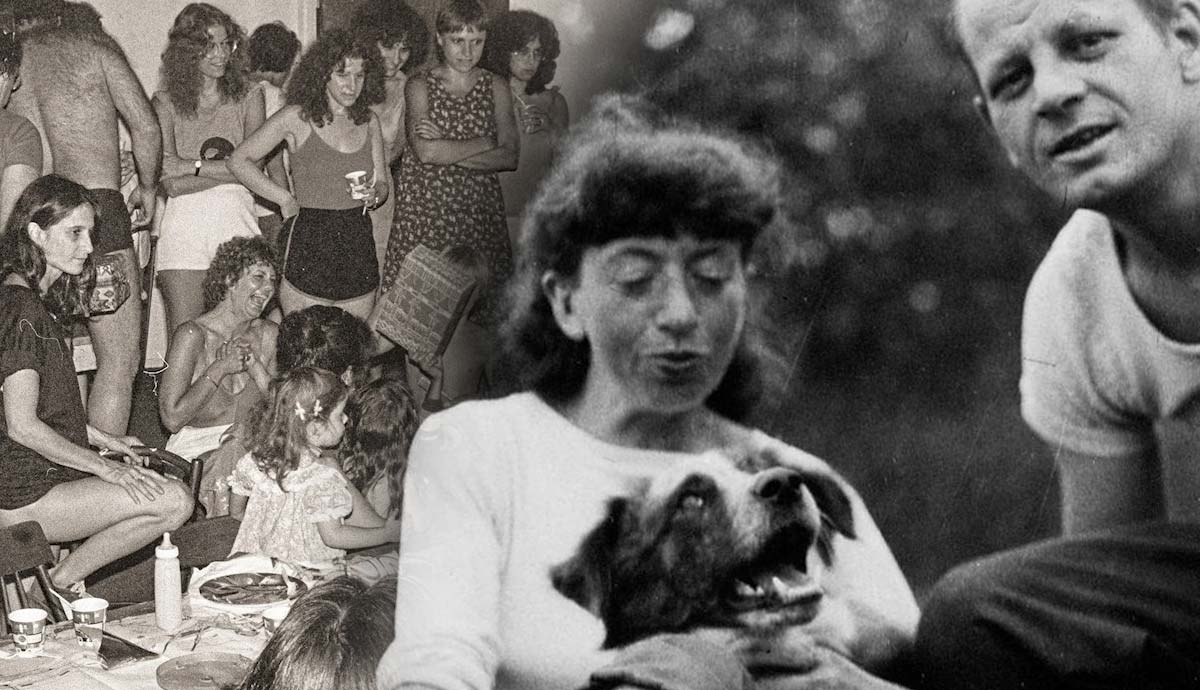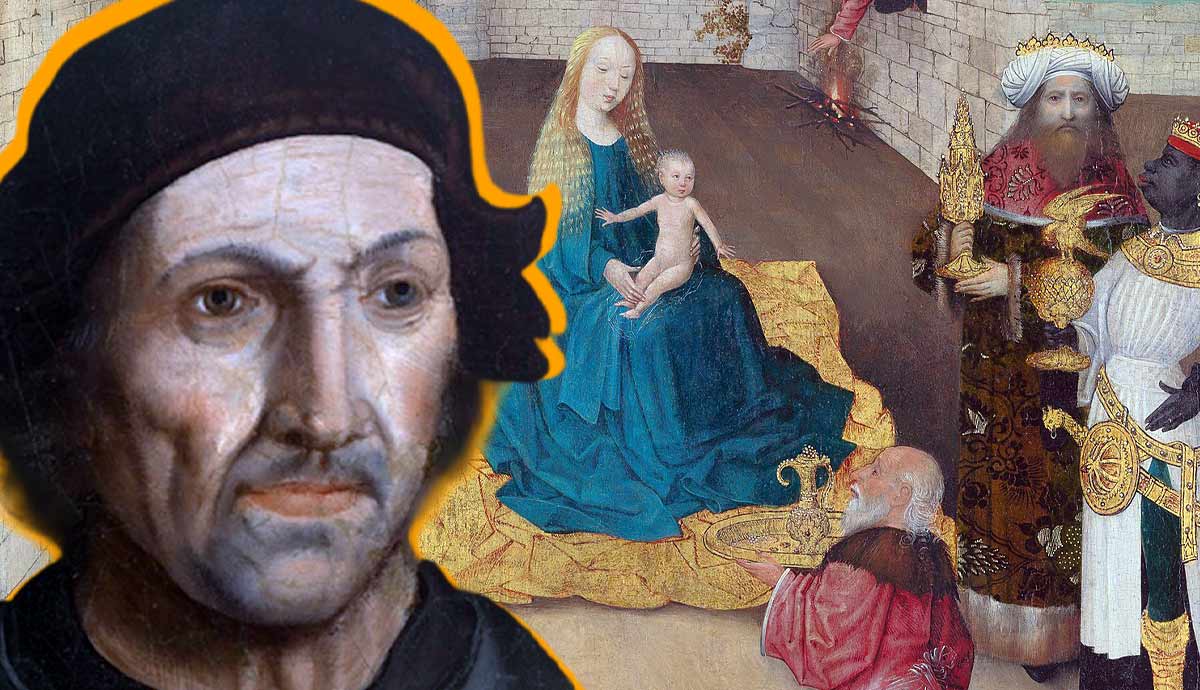
In the 1950s, a quasi-psychoanalytical organization called the Sullivan Institute began to gain a following among the intellectuals and creatives of NYC. The Sullivanians argued that nuclear family and emotional attachments were destructive to human nature and encouraged communal living and free love. Among the first big names to fall for the Sullivanian theory was the art critic Clement Greenberg, who introduced to it dozens of artists, including Jackson Pollock and Lee Krasner. Pollock died in a car crash less than a year after joining. Some cult experts and historians believe that the cult was at least partially responsible for his death.
The Troubled Life of Jackson Pollock

The world-famous Abstract Expressionist artist Jackson Pollock became the embodiment of the myth about the great male artist. A difficult character prone to addictions and violent outbursts who created something intellectually unavailable to the crowd, he turned into an archetypal character similar to Pablo Picasso. Pollock started to drink heavily as a teenager to cope with his anger, sadness, and social awkwardness. His father was also a violent alcoholic, and the childhood memories of his behavior left a deep mark on Pollock’s psyche. Neglected as a child, he never developed a sense of home and safety and carried the anxiety throughout his entire life.
Over the years, the issues became worse. Pollock started getting into fights in bars, harassed women, and broke glass with his bare hands, later mimicking his drip paintings with his blood on cafe tables. His marriage to another outstanding artist, Lee Krasner, did not help. While Krasner had to abandon her artistic pursuits to care for Pollock’s well-being and manage his career, she could not stop him from drinking. Several times, the couple’s friends suggested psychotherapy to them. According to some historians, one of these attempts contributed to his untimely death in 1956.
Harry Stack Sullivan: The Unwilling Founder of the Cult

The Sullivanian therapy was named after the American psychiatrist Harry Stack Sullivan. Trained in a Freudian tradition, he expanded the theories he learned. In classical psychoanalysis, work focuses on the early stages of the patient’s life and their relationship to their parents. Sullivan insisted that mental development did not stop after reaching maturity and that exposure to other people affected one’s personality throughout their entire life. He assigned particular importance to the same-gender friendships that children form before puberty and argued that this practice of close relationships should continue in older age. He believed loneliness was the most painful of all emotions. He also believed loneliness was among the most important factors contributing to mental disorders.
Sullivan was known for applying his method to schizophrenia patients. Groups of people with confirmed diagnoses settled together in large apartments under medical supervision. Sullivan’s therapy showed considerable positive results. It was later applied to people with no severe mental disorders. Despite his association with the Sullivanian Institute and its destructive cult, Sullivan was never involved in it. He died in 1949, and the subsequent events were unrelated to him personally.
The Sullivanian Institute

The situation took a dramatically different turn in the 1950s after a previously unknown Saul B. Newton gained recognition. Discussing Newton’s origins and biography is a challenge in itself. Throughout his life, the man fabricated at least two versions of his biography, both widely different from reality. He claimed that he fought in the Spanish Civil War and got good at killing people, while in reality, he worked as a clerk loosely related to the involvement of American troops in the Spanish conflict.
Newton had no medical degree but worked as a clerk for several years at a psychiatric institution founded by Harry Stack Sullivan, where he was exposed to his theories. Newton felt inclined to continue Sullivan’s work in a way that would be beneficial not for the patients but for him. Newton compensated for his lack of formal education by marrying a licensed therapist Dr. Jane Pearce, with whom he would found his own institute and a branch of therapy.
Saul B. Newton took the core ideas of Sullivan and put them to extremes, distorting his original intentions. The concept of mental growth through exposure to others got a radical interpretation. Newton insisted that traditional families and monogamous unions were traps that limited the development of an individual. To maintain a healthy psyche, according to Newton, his patients had to abandon their families, live in communes, and practice polygamy, never sleeping with anyone more than once to avoid attachments.
The Destructive Practices of the Sullivanians

In general, the 1950s society demanded reinventing family roles and structures. Particularly, this demand was happening among the intellectual youth. It would later lead to the sexual revolution of the 1960s. However, Newton went much further than simply offering a chance for liberation. He turned his pseudo-medical practice into a full-blown cult with constant surveillance and control.
Newton and Pearce started by attracting young psychology students and inviting them to do internships at the new institute. These students, immersed in Newton’s ideology and controlled by him, would form the first generation of Sullivanian therapists. They started with weekly seances for those who felt discontent with society’s expectations and their life situation, mostly targeting young intellectuals from the same left-wing bohemian circles.

However, as the seances went on, the Sullivanian therapist gradually pushed the idea that more therapy was required to save the patient from mental illness and suicide. The patients were told that their parents, particularly their mothers, were responsible for their troubled emotional state and inability to feel happiness. Thus, the only solution was to sever all ties with one’s family and join other patients in a commune. Newton deliberately reinforced the idea of mothers being disgusted by their children, taking revenge for their ruined lives and bodies. If a prospective Sullivanian had children of their own, they were obliged to leave them in boarding schools or foster homes.
Soon, a Sullivanian patient moved into a communal apartment with other Sullivanians. Newton’s interpretation of Sullivan’s theory stated that no patient should be left alone for even a moment. Each commune member had a date book with them, which they filled with meetings, dates, and dinners. A good Sullivanian could not reject a demand for attention or sex from another Sullivanian, thus social connections quickly turned into something forced and traumatizing. Leaving the cult was nearly impossible. During mandatory weekly sessions, therapists convinced their patients they had nowhere else to go. They were made to think that they would essentially commit suicide after being left alone.
Artists at the Sullivan Institute

As Sullivanian therapy emerged as a new and radical method, it started to attract the attention of New York intellectuals. Among the first ones was the famous art critic Clement Greenberg, the leading promoter of Abstract Expressionism. Greenberg, raised in a privileged middle-class family, had a troubled yet dependent relationship with his father and fell for the Sullivanian promise to transform his life. Gradually, he started inviting his friends and colleagues to therapy sessions. For creative classes in NYC, the appeal of Sullivanian therapy lay in an impulse to throw away social expectations and responsibilities, focusing on social life, fun, and artistic and intellectual self-expression.
At the time, Jackson Pollock and Lee Krasner were going through yet another crisis. Under Krasner’s care, Pollock managed to stay sober from 1947 to 1951. This highly productive period in the artist’s life ended partially due to the involvement of Greenberg, who criticized Pollock’s sober works. In 1955, the relationship between the couple was as tense as ever. Pollock was constantly drunk, aggressive, and abusive, presenting a physical threat to Krasner. Greenberg suggested therapy and drove the couple to Dr. Jane Pearse. Krasner was unimpressed by the Sullivanian methods, but Pollock remained in therapy.

Both Pollock and Greenberg were lifelong alcoholics, albeit Greenbern was a more functional one and less prone to violence and outrageous behaviors. One of the particularly destructive features of the Sullivanian therapy was its encouraging attitude towards alcohol. The ‘therapists’ saw it as a fuel for creativity that allowed the patient to overcome their social anxiety. Thus, Pollock received an official pardon for his main issue.
Lee Krasner’s concerns about Pollock’s health essentially made her the villain in the story. Pearse convinced Pollock that a monogamous relationship limited his creative potential and suggested he would need to find someone else in order to grow. Thus, Pollock’s last remaining control mechanisms were demonstratively flung out of the window, resulting in an unstoppable drunken escapade.
Pollock did not spend too long in therapy. Less than a year later, he died in a car crash, killing his friend Edith Metzger and injuring Ruth Kligman, his lover at the time. According to Kligman’s testimony, drunk Pollock sped up to scare the women riding in the car but could not handle the car in his condition.
The Death of Jackson Pollock Was Not the Only Tragedy

Despite the tragedy, Clement Greenberg remained a lifelong committed member of the group, praising its practices and beliefs. In the media, the death of Jackson Pollock was barely connected to his involvement with the Sullivanians. This aspect of his life was virtually unknown until the 2023 book The Sullivanians: Sex, Psychotherapy, and the Wild Life of an American Commune by Alexander Stille came out. Stille explored the long decades of Sullivanian existence and made an emphasis on their presence in the well-known artistic circles of the time. Although no Sullivanian directly forced Pollock to drive his car into a tree, his worsening condition was a direct result of ‘therapy’ which essentially led to the tragedy.
The Sullivanian cult existed until the death of Saul B. Newton in 1991. From that moment, hundreds of tragic stories started to come out. Apart from the enormous fortune accumulated by Newton from his patients, many reported cases of sexual abuse, violence, and brainwashing. For years, families attempted to reunite with their children and bring back their trust. Some Sullivanians who were forced to give their children away were never able to find them again.











